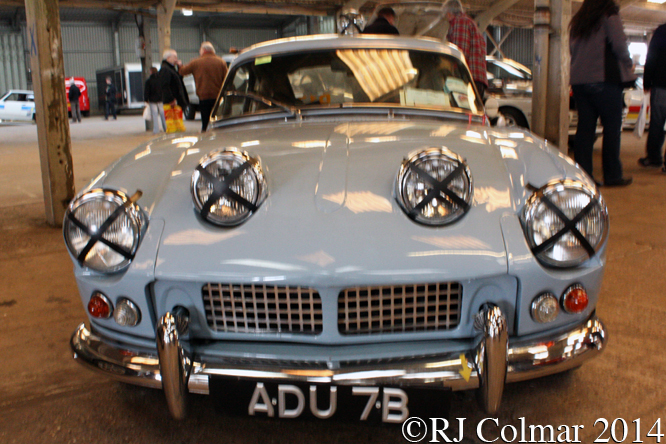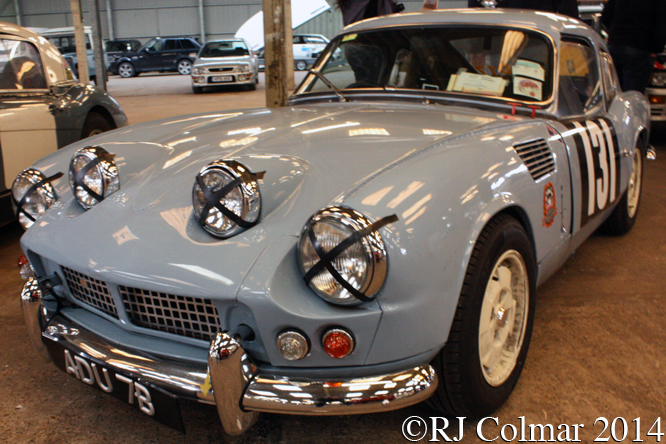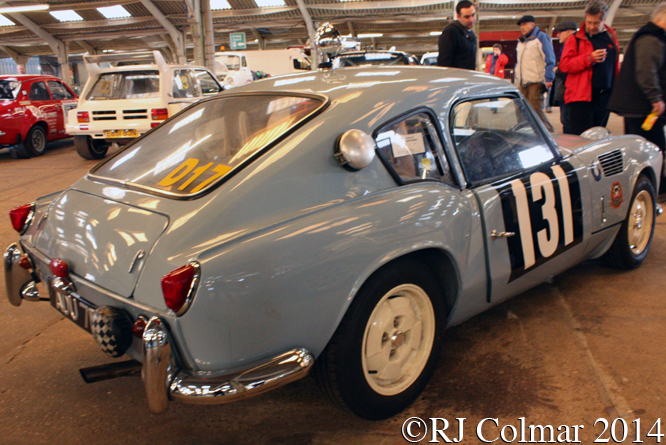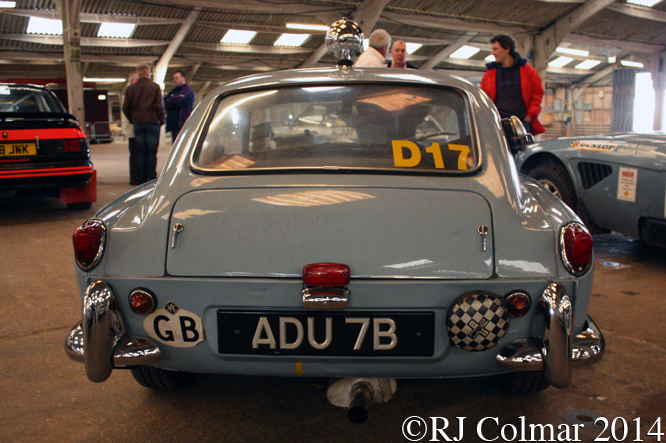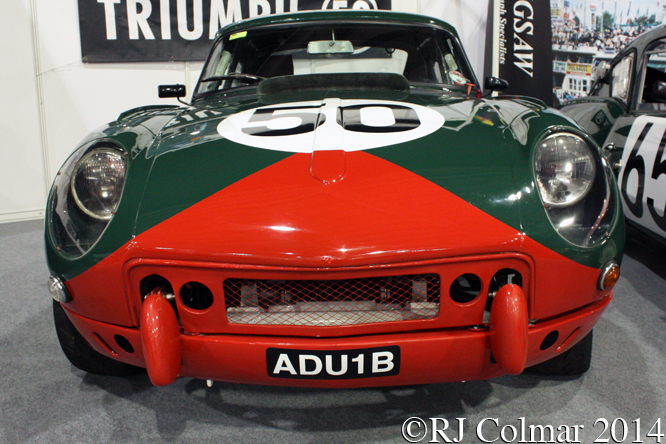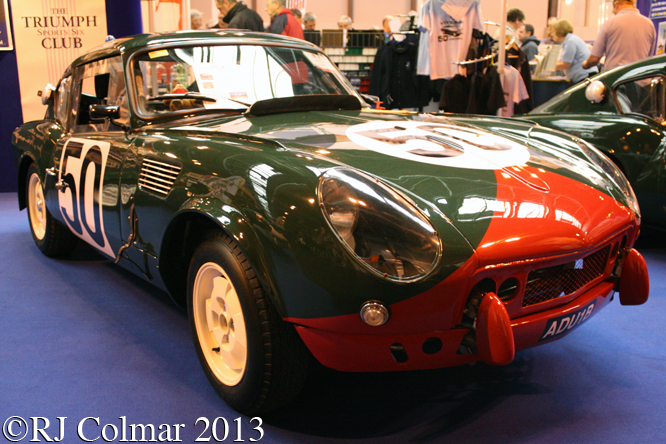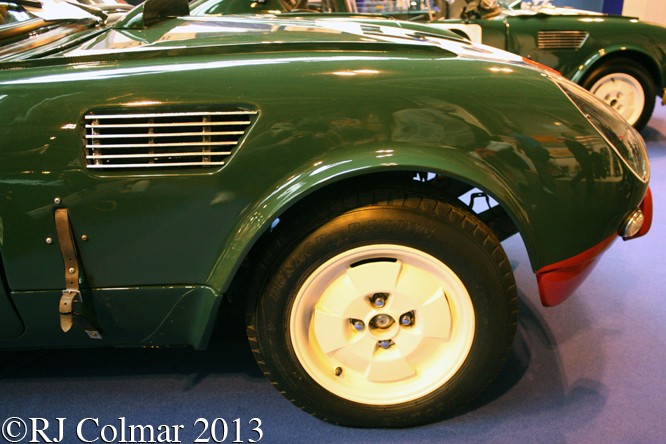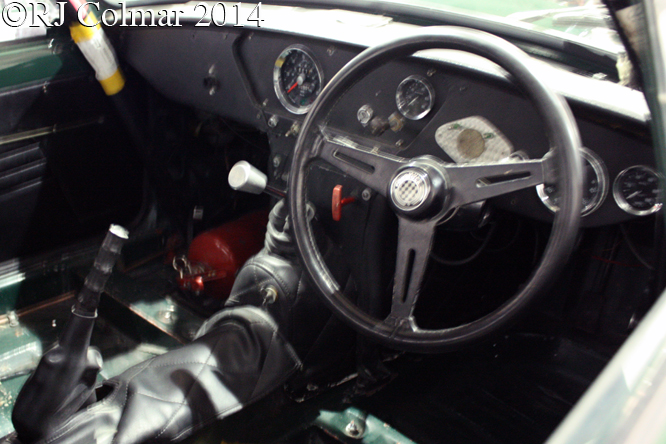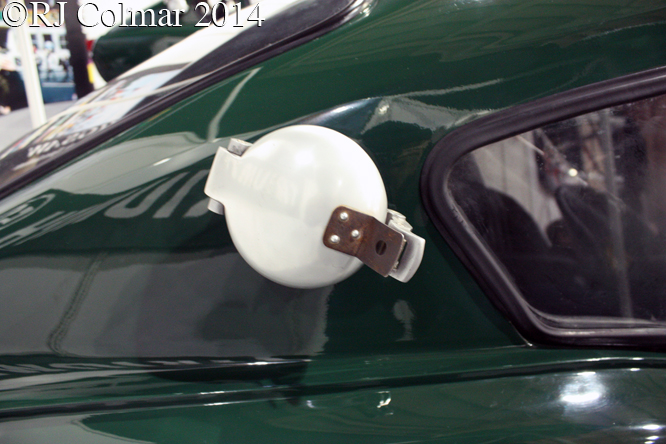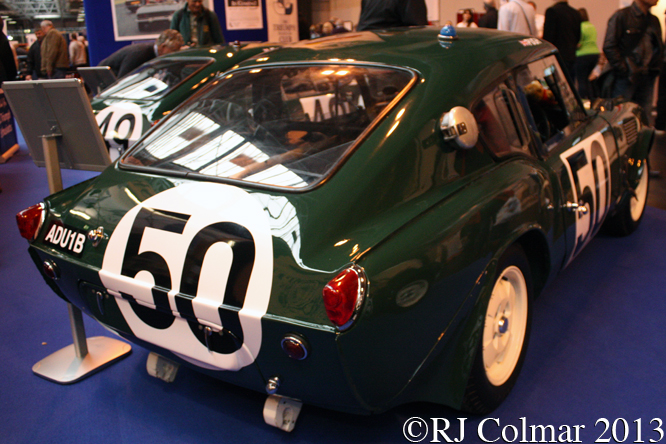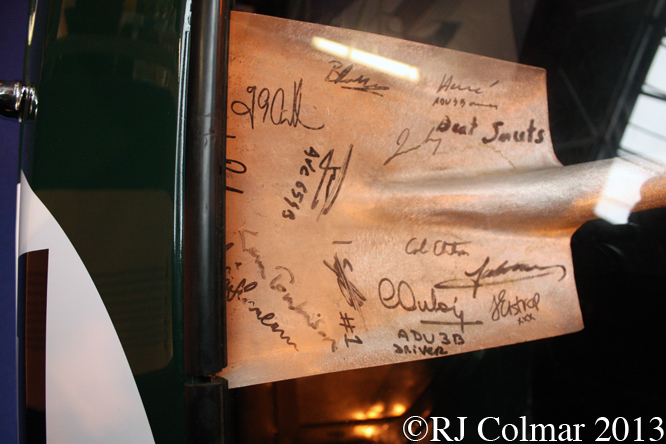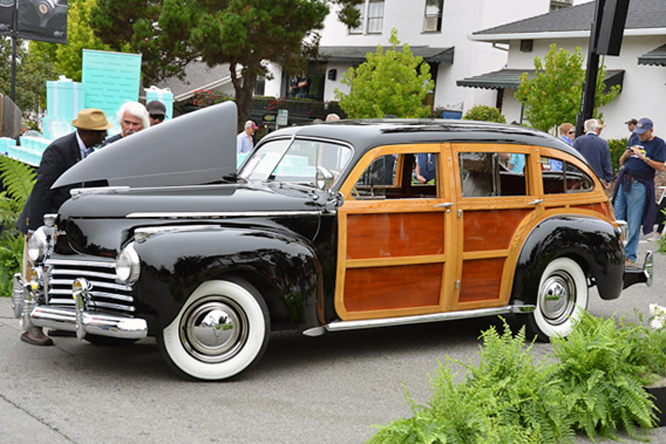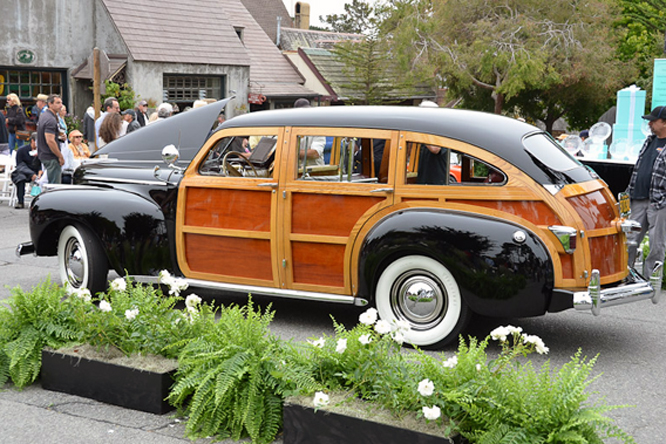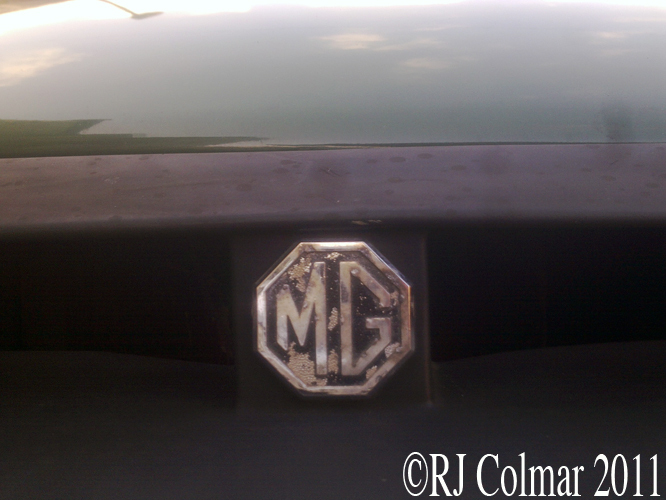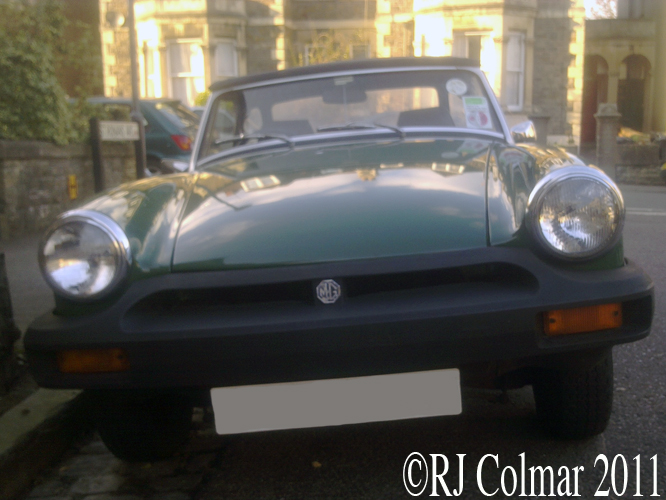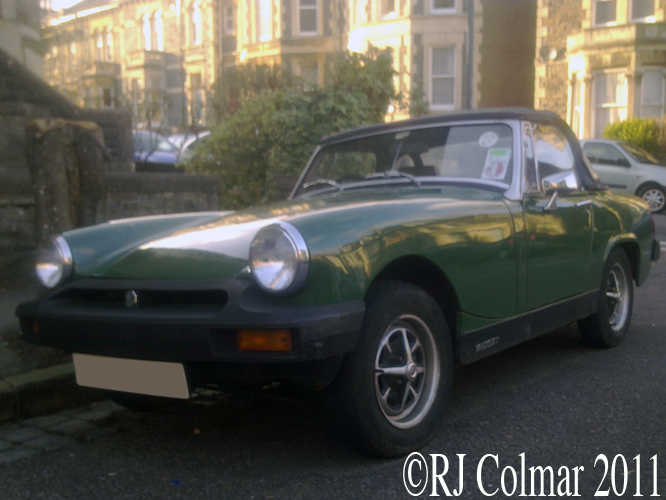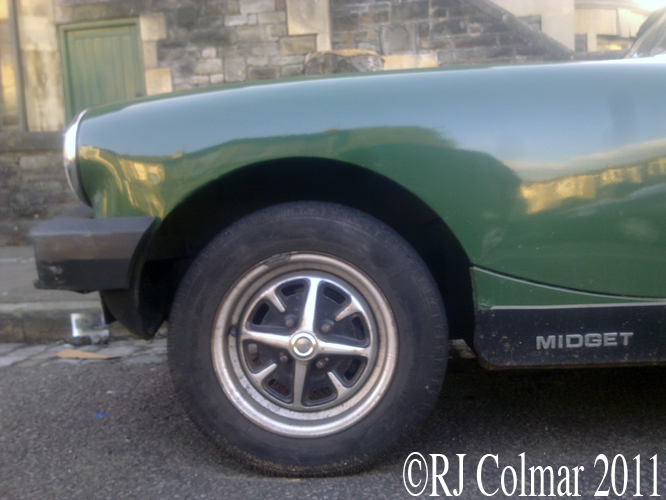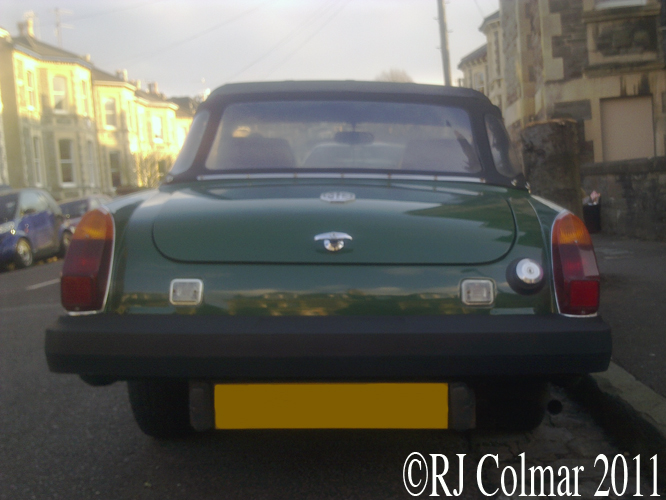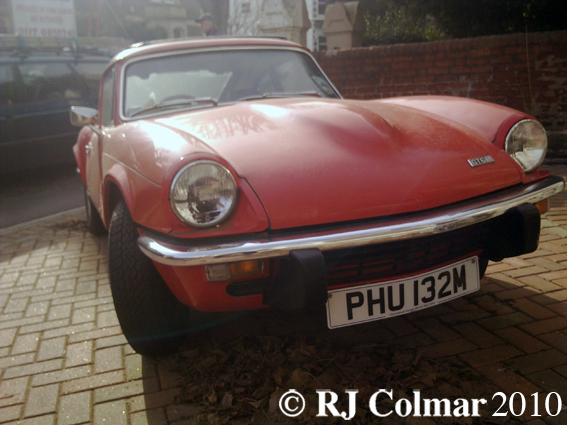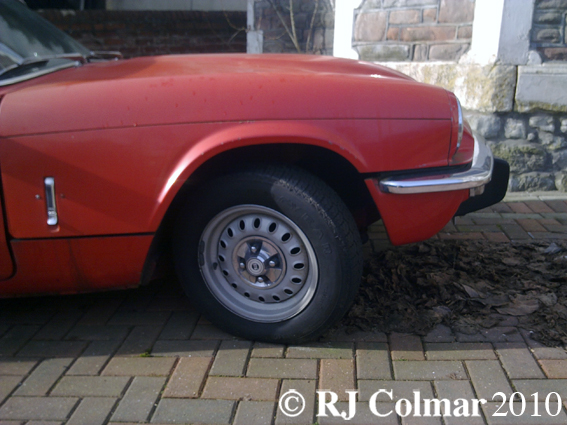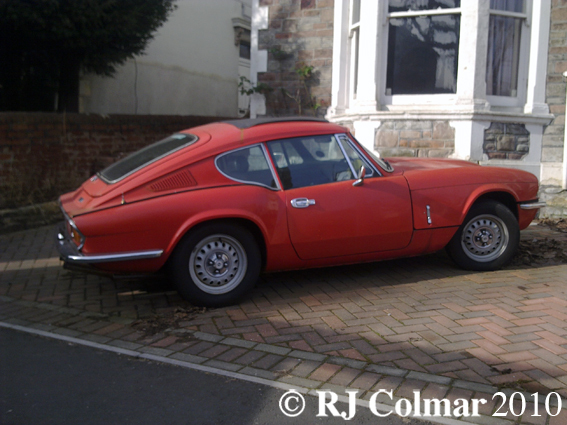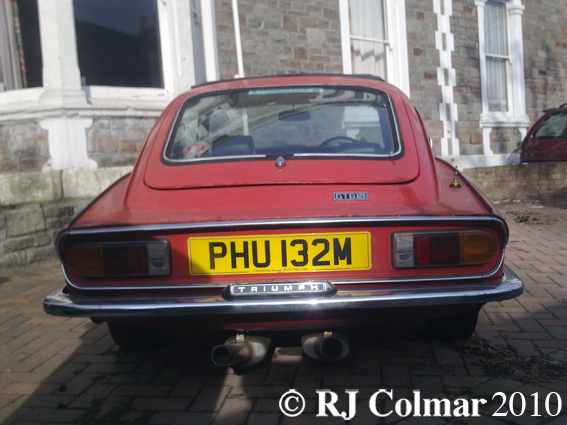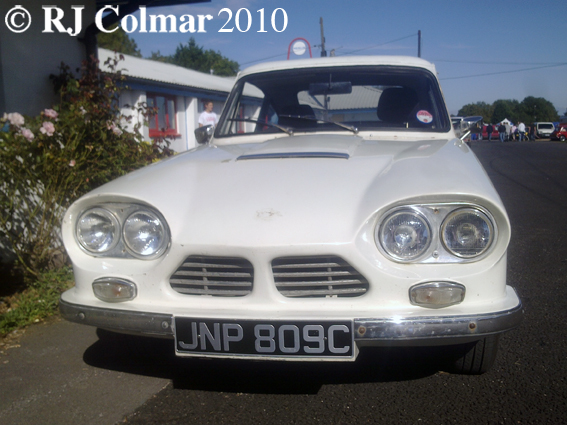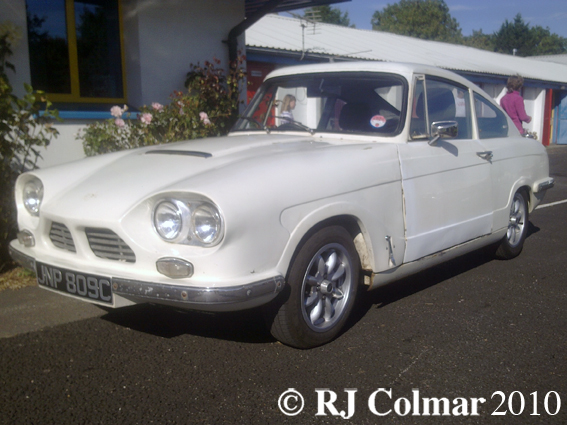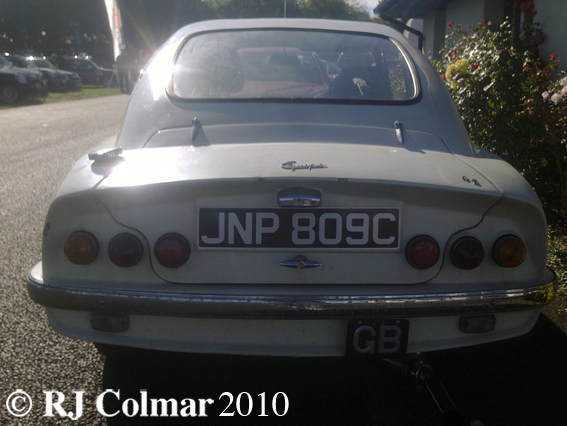After four all to brief hours sleep I woke up at 4:30 am on Friday and got togged up in swinging sixtyish accessorized fancy dress which included button collard shirt, period scarf, flat hat and a pair of round blue shades.
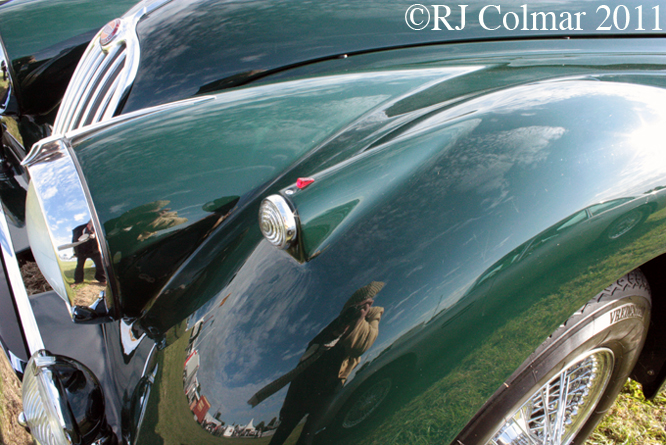
By 5.30 am I was headed back towards Lord Marches renowned Goodwood estate, this time to visit his private race track which I had not seen since in 1987. Back then I was visiting to take part in a track day, the circuit had not been used for racing since 1966 and the facilities were in a sad state of disrepair.
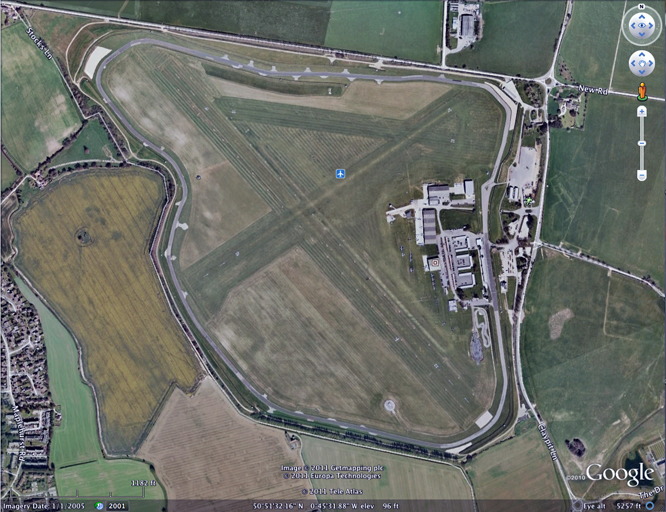
Five years after the runaway success of the inaugural 1993 Goodwood Festival of Speed, held on a special hill climb track round the main buildings of his estate, Lord March decided to revive events on his racing circuit with an event dedicated to vehicles that raced in the Circuits halcyon days from 1948 to 1966.
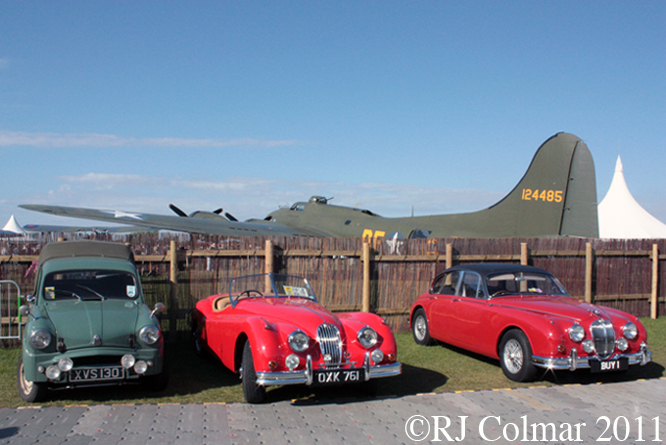
The Revival has become a huge fancy dress party covering possibly the most optimistic two decades the Western World has ever known. More on the fancy dress side of the Revival will follow with a special blog on Saturday. Like the Festival of Speed the Goodwood Revival has also become a runaway success both racing days this year were completely sold out. Seen here a Standard 6CWT Pickup, XK140 and a Mk2 Jaguar.
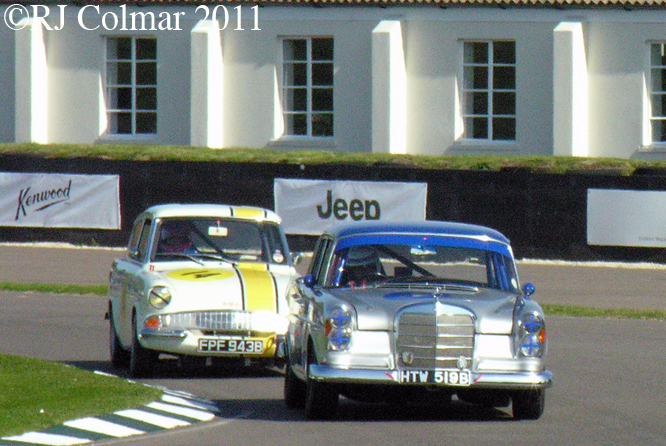
I got to the track in plenty of time to catch all the practice sesions which were held on the Friday, but I had not counted on spending well over an hour dribbling around the car park reserved for those spectators arriving in classic cars ! The first action I caught on track came courtesy of the touring cars, here Brian Redman in his Mercedes Benz 300SE leads another former Grand Prix driver and, in my humble opinion, one of the better former Top Gear presenters, Tiff Needell driving a Ford Anglia through Woodcote.
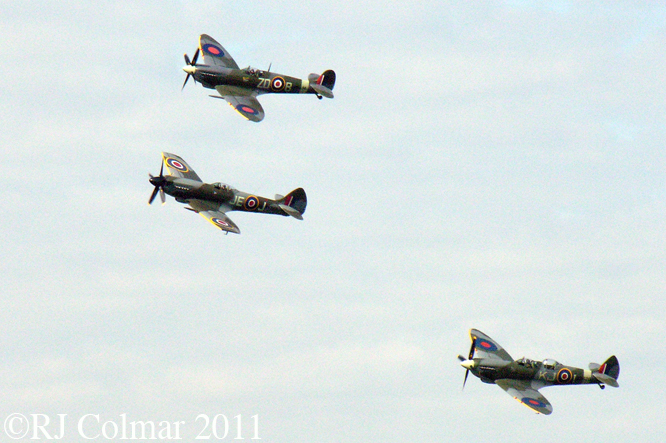
Organisers hoped to gather 15 Supermarine Spitfires at last weekends event here a Mk5, short wing 5 blade screw Mk 15 and two seater Mk9 fly past these awesome machines are powered by 24 litre / 1465 cui Rolls Royce Merlin motors.
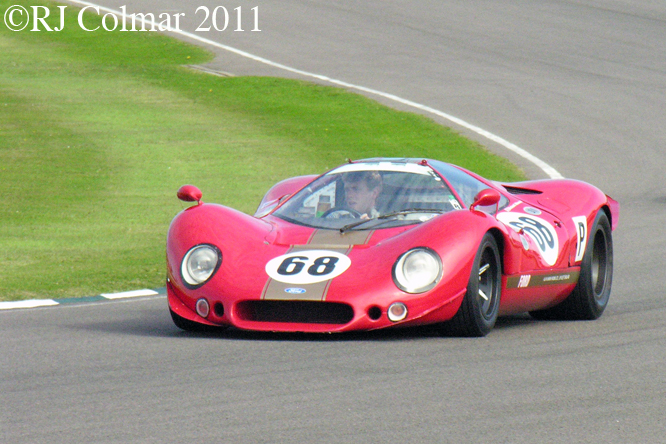
Ford of Britain celebrated it’s centenary with a stupendous collection of passenger, military and commercial vehicles, none quite as breathtaking as the Ford 3 litre / 183 cui formula 1 DFV powered Ford P68 /F3L designed by Len Bailey and built by Alan Mann Racing. Jim Clark was to have driven this car on it’s debut at Brands Hatch but because of conflicting tyre contracts Jim ended up racing a Formula 2 car at Hockenheim with fatal consequences.
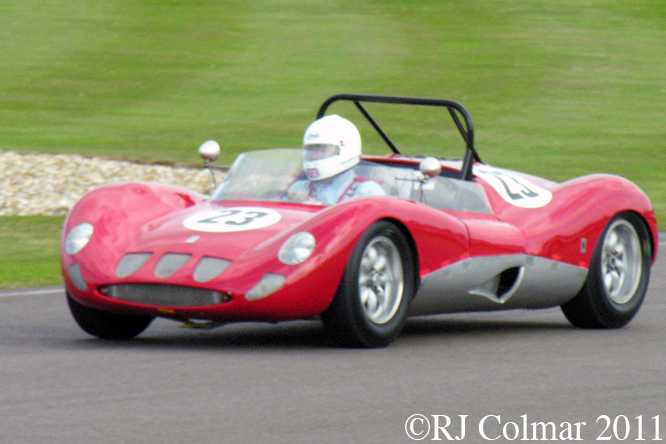
Surprise car of the meeting that I had never heard of before is the #23 Marina Special powered by Rolls Royce V8 driven by Mark Ashworth, turns out this car was built by Alan MacDonald at the Beagle Aircraft Hanger in Shoreham for Alan Mann who would later be responsible for the Ford P68. Rolls Royce were not in the least impressed with the Marina RR and the car appears to have been exiled in Belgium for fear that it might be impounded.
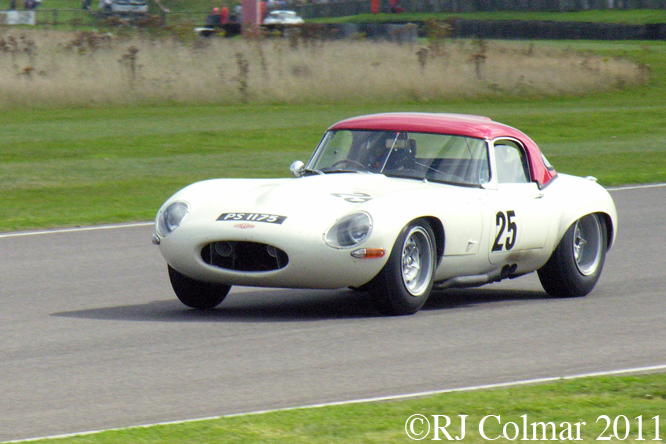
Ueber Formula One aerodynamicist Adrian Newey has an important day job at with reigning Formula One Champions Red Bull Racing, during this rare weekend off he teamed up to drive the #25 E-type Jagaur with 10 time Grand Prix winner Gerhard Berger. Some interesting tweaks to the boot lid helped the pair stick this car on pole over 2 seconds clear of the rest of the field for Saturdays Fordwater Trophy Race.
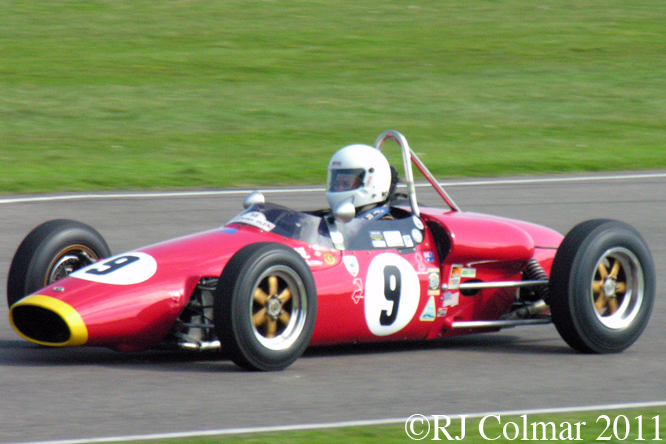
I had never seen or heard a screaming formula Junior car before Friday and their 1100 cc / 67 cui 4 cylinder motors scream enough to make your eyes water. The #9 Elfin Ford above of Bill Hemming was one of two Antipodean designed and built Formula Junior cars entered in the Chichester Cup.
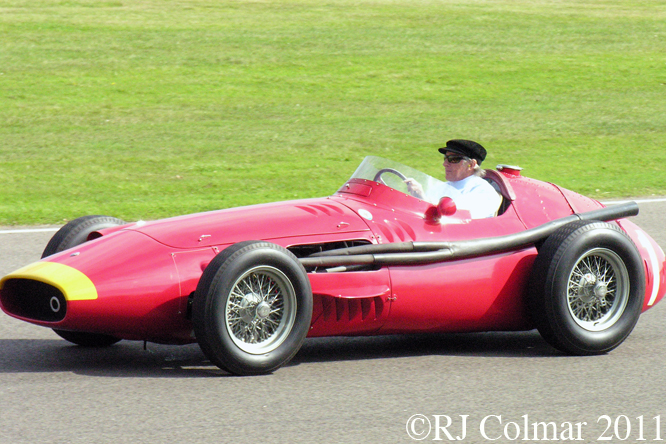
Among the many features was a display of cars driven by the first five time world champion Juan Manuel Fangio. The #1 Maserati 250 F seen above was driven by Fangio to his last and perhaps the most masterful Grand Prix victory of all time at the Nurburging in 1957, after a botched pit stop Fangio made up over 50 seconds on two Ferrari’s over taking them on the penultimate lap and holding on to win by three seconds. Seen at the wheel of a 250F for the first time in his trade mark hat is Sir Jackie Stewart, who by his own admission also drove his finest race at the Nurburgring winning a wet and foggy 1968 German Grand Prix by four minutes despite driving round the torturous 14 mile track with a broken wrist !
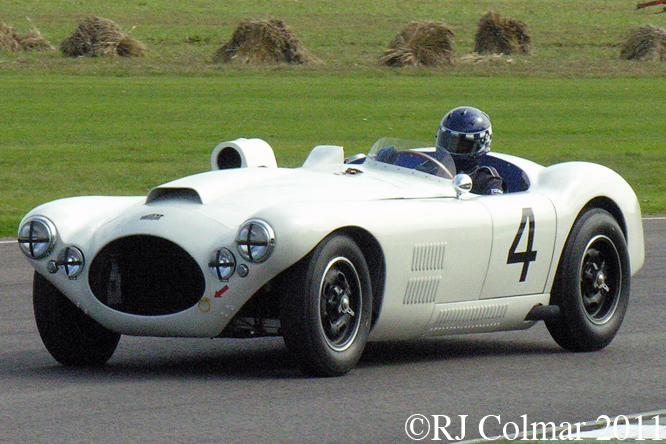
Among many evocative vehicles of US origin at Goodwood was this 1953 Chrsyler Hemi powered Cunningham C4R replica roadster, initially designed to compete at Le Mans, driven by Ben Shuckburgh during practice for the in the Freddie March Memorial Race.

The Madgwick Cup for under 3 litre / 183 cui sports cars built between 1960 and 1966 featured this rare Elva Porsche Mk 7P driven by Helmut Ries. Most Elva’s entered for the Madgwick Cup were BMW powered.
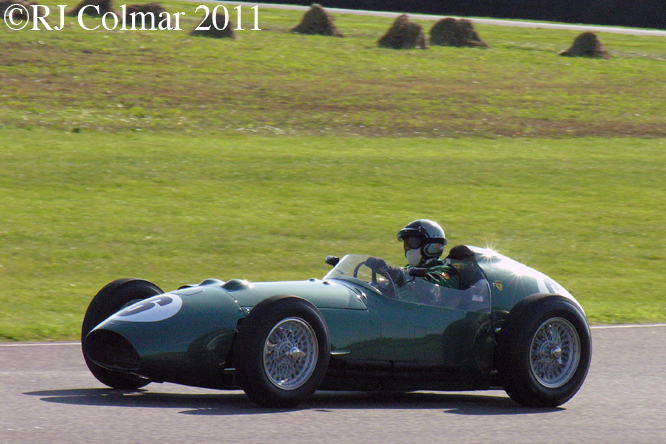
The Richmond Trophy of the last front engined Grand Prix Cars had a fittingly international entry of vehicles, Hubert Fabri is seen here at the wheel of his Aston Martin DBR4.
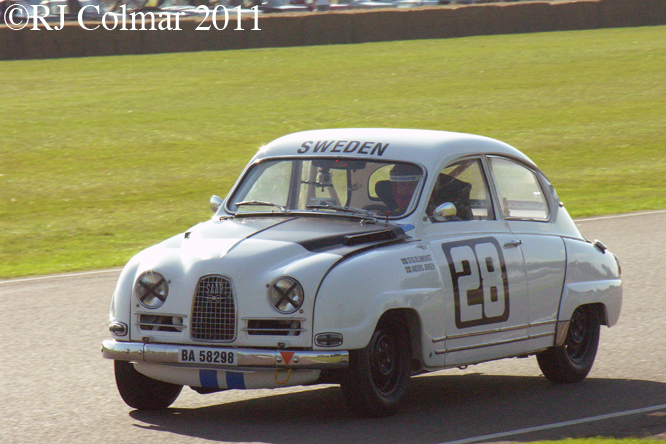
The one and only Stig Blomquvist, 1984 World Rally Champion, mercifully no relation to the poor imitation on Top Gear, shared the 2 stroke #28 1963 Saab 96 Sport with Anders Jensen seen here at the wheel during the second touring car practice for the St Mary’s Trophy.
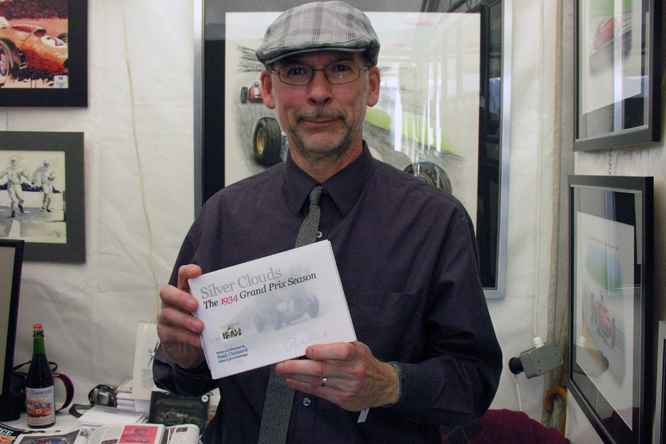
I made time to take a break from the on track action to catch fellow blogger artist Paul Chenard who came all the way from Nova Scotia to promote his latest publication the illustrated story of the 1934 Grand Prix season “Silver Clouds”. Apparently the Daimler Benz Museum were so impressed with this hand bound limited edition they have acquired two copies. Going fast, act now ! To avoid forthcoming seasonal disappointment you can contact Paul to order your copy on his blog here.
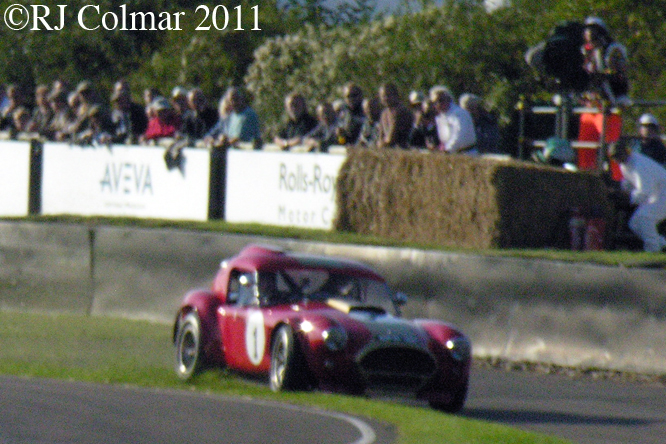
A number of incidents during the days qualifying sessions for the races held on Saturday and Sunday conspired to delay the proceedings by up to an hour. Gerhard Berger, sharing Grahame Bryant’s #1 AC Cobra entered in the Glover RAC TT Celebration race, left the course going into Woodcote,
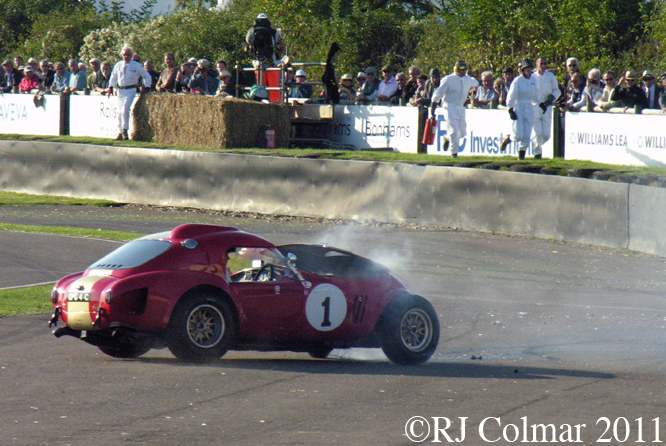
the resultant damage precluded the vehicles participation in the rest of the weekends proceedings.
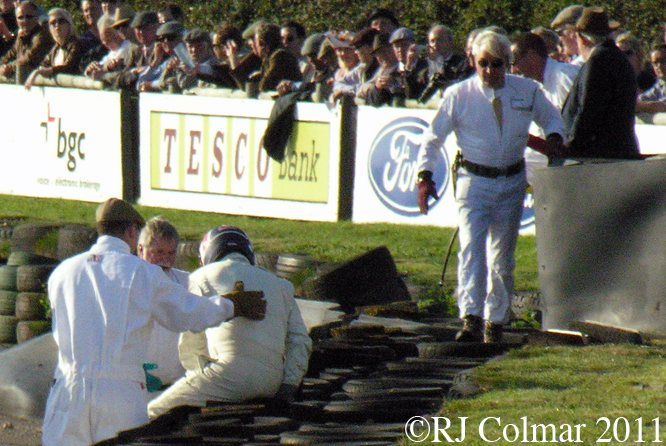
Fortunately Gerhard was not seriously injured and finished second sharing Adrian Newey’s E-type Jaguar in the Fordwater Trophy Race on the Saturday.
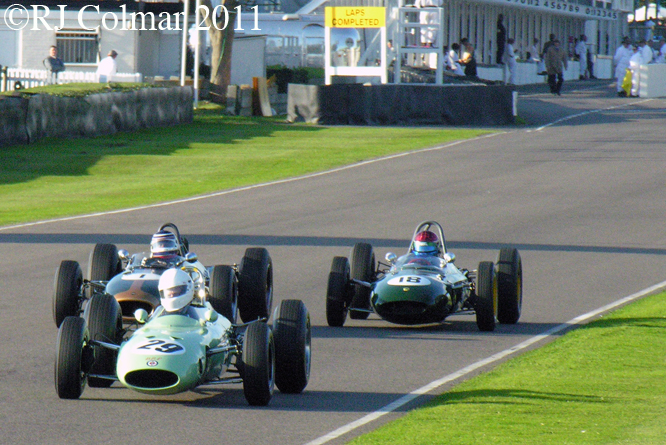
The 1.5 litre / 91.5 cui era of Formula One goes back to the heyday of British driver participation in Grand Prix racing when Graham Hill, Jim Clark and John Surtees took three consecutive World titles from 1962 to 1964 and Jim Clark won his second title in 1965. Above Kurt DelBene in the 1964 #29 BRP-BRM, Roy Walzer the 1964 #1 Brabham Climax BT11 and Paul Drayson in the 1962 #18 Lotus BRM during qualifying for the Glover Trophy. This era of cars were immortalised in the film Grand Prix, though many of the chassis used in the film are actually cheaper Formula Juniors.
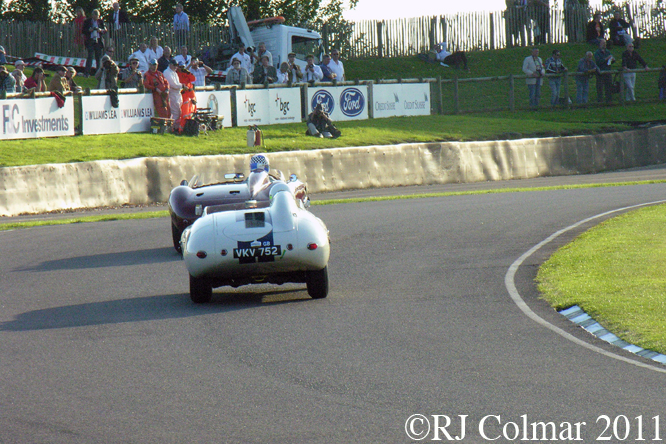
For romantic dreamers like myself there is a sad tale to relate to the prototype E2A ‘VKV 752’ seen here being driven by Tony Dron. This was the second of two E type Jaguar prototypes featuring components including the independent rear suspension that would be carried over into the production ‘E-Type’ model.
E2A was driven at Le Mans by Hangsen & Gurney without success in 1960 and used by the Cunningham team in the USA with Sir Jack Brabham and Bruce McLaren amongst others at the wheel scoring a single minor victory against weak opposition. In 1961 Jaguar used E2A as a test mule back in England.
Roger Woodley Jaguar’s customer competition manager at the time was allowed to save E2A from the scrap heap on condition that the car would not be raced again. Sadly the first thing new owner Stefan Ziegler did after acquiring E2A for US$4,957,000 was turn E2A into a weapons grade racer and disregard Jaguars request that the car not be raced again.
Seems rather pointless when any number of weapons grade ‘D-types’ can be acquired for a fraction of the cost of E2A. More on the ‘to race or not to race E2A’ argument can be seen on this Nostalgia Forum thread.
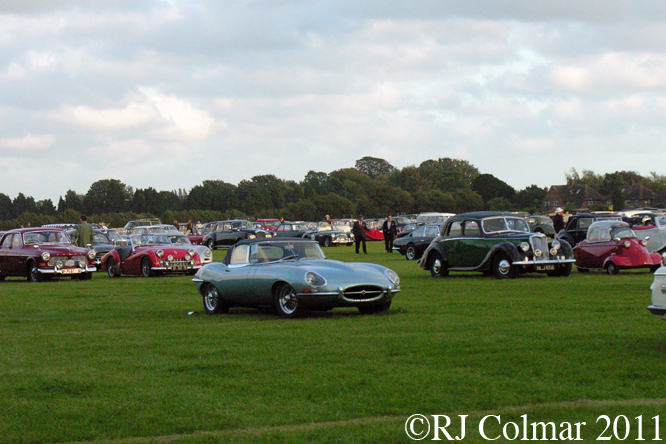
After the qualifying sessions were over it was time to head back through the spectators Classic Car Park, I could have stayed longer but it was getting to the dark end of an already long day.
Thanks for joining me on this Goodwood Revival edition of ‘Gettin’ a lil’ psycho on tyres’, I will continue to bring you more stories from Goodwood all week, I hope you will join me again for the first anniversary edition of ‘Gettin a lil’ psycho on tyres’ tomorrow. Don’t forget to come back now !
